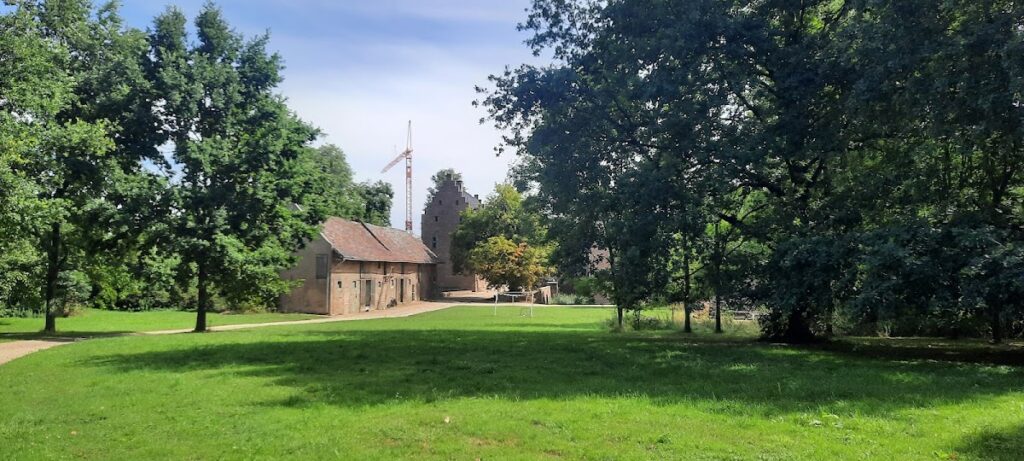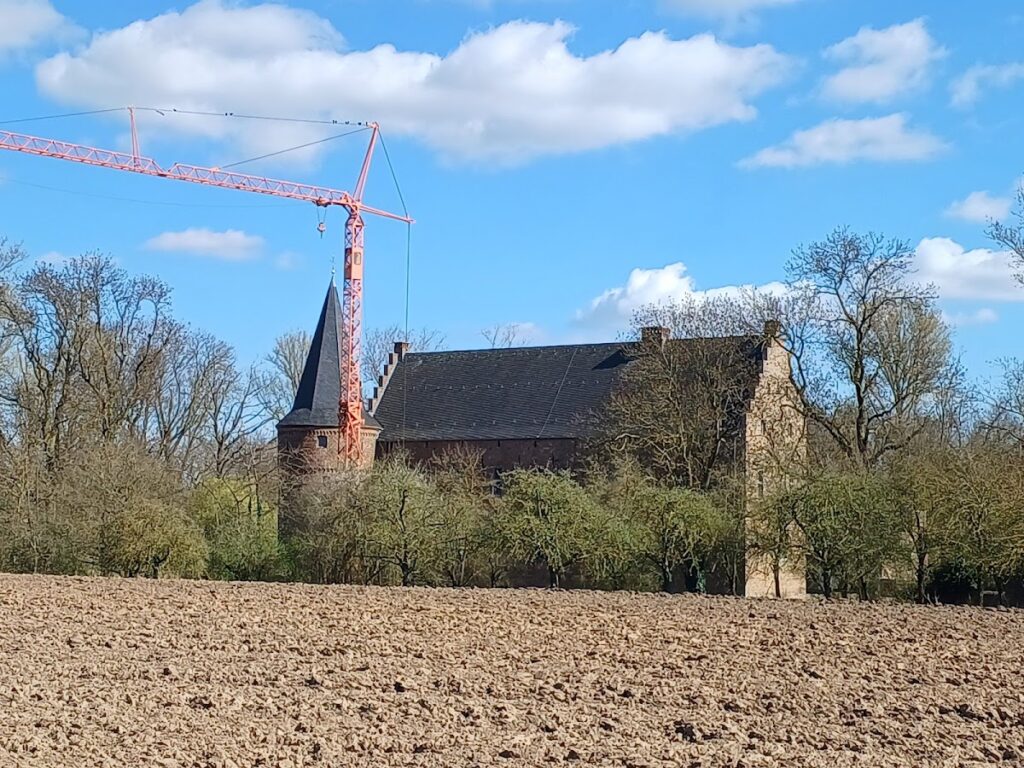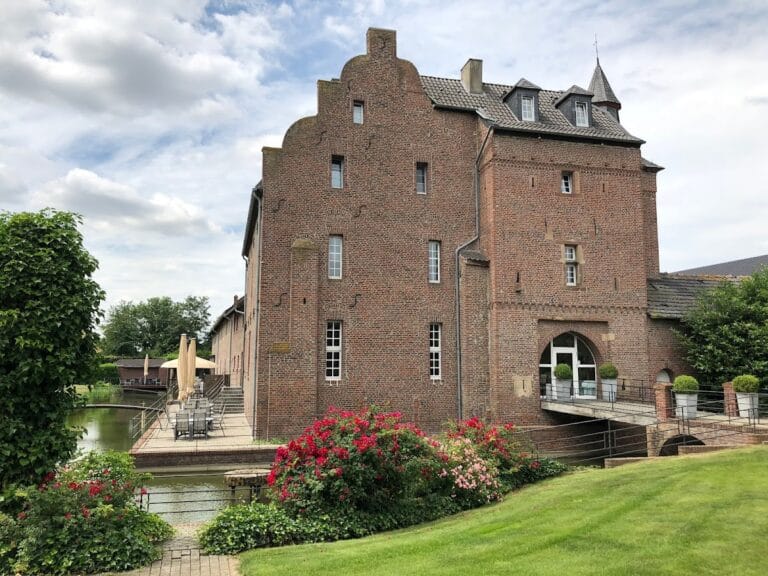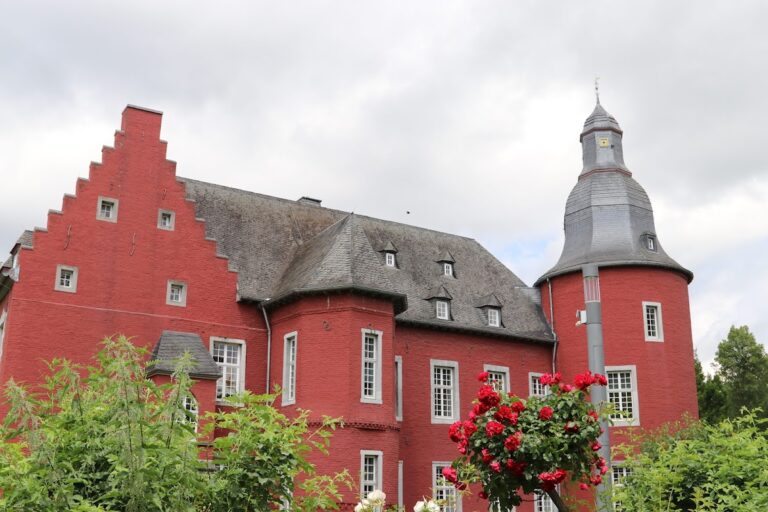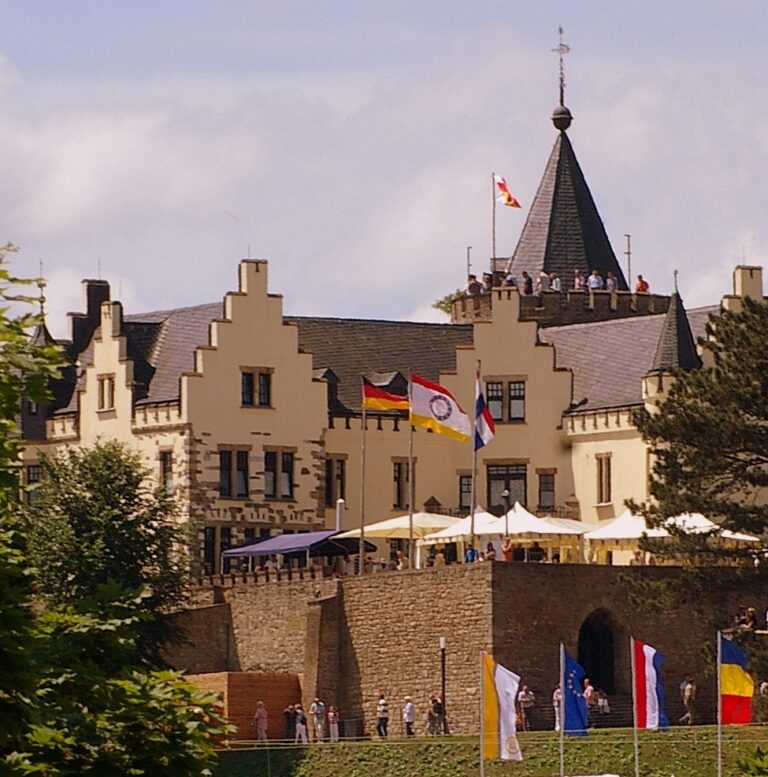Burg Engelsdorf: A Medieval Water Castle in Aldenhoven, Germany
Visitor Information
Google Rating: 4.4
Popularity: Very Low
Google Maps: View on Google Maps
Country: Germany
Civilization: Unclassified
Remains: Military
History
Burg Engelsdorf is situated in the municipality of Aldenhoven in modern Germany. This site originated as a medieval water castle constructed by local nobility during the High Middle Ages.
The castle first appears in historical records dating back to 1080, serving as the fortified residence of the Lords of Engelsdorf, including the notable figure Emond von Engelsdorf. Its position, reinforced by substantial walls and a surrounding moat supplied by the Merzbach stream, reflected the defensive needs of its early occupants. Over time, Burg Engelsdorf underwent several cycles of destruction and rebuilding, indicating its ongoing strategic significance in the region.
In 1476, following a property settlement involving the Aachen provost Reynart von Palant, ownership of the castle became shared among his relatives, Werner III. zu Palant and Gerhard von Palant. This arrangement likely transformed the castle into a Ganerbenburg, a type of fortress jointly held by multiple families. Soon after, these shares were transferred to Emont zu Pralant, signaling another shift in stewardship.
The fortification’s external defensive wall, enclosing the courtyard and the castle itself, remained standing until around 1850, marking the endurance of its medieval structure into the modern era. Later, in the 19th century, the castle was acquired by the Opfergelt family, who maintained possession for a period.
Since 1989, the castle has belonged to a Chilean artist couple named Fernández-Ortíz. They repurposed the historic site into a space for artistic creation, including a studio, a foundry, and a workshop for woodworking. In 2007, efforts were made to stabilize the Gothic tower vault, which faced structural stress from the surrounding masonry, ensuring the preservation of this significant architectural element.
Remains
Burg Engelsdorf was originally constructed as a water castle featuring a moat fed by the Merzbach stream, a design that provided active defense through a surrounding water barrier coupled with robust, thick walls. This layout defines the overall arrangement of the remaining structures.
Noteworthy among surviving elements is the Gothic tower vault, a vaulted ceiling structure characterized by its pointed arches and ribbed design typical of Gothic architecture. Due to considerable pressure from adjacent masonry, this vault required stabilization work in 2007 to prevent collapse. The restoration highlights both the medieval craftsmanship and ongoing preservation challenges.
Until approximately the mid-19th century, a defensive wall enclosed the castle’s courtyard and buildings. While the present state of this wall is not specifically detailed, photographic evidence reveals features such as chapel windows and elements of the palas, which is the castle’s main residential building. These include visible upper floors and shooting slits—narrow vertical openings designed for archery or small arms defense.
Additional architectural components documented through images consist of a stair tower crowned with a cordon cornice, which is a horizontal decorative molding typically separating different levels, as well as a tower spire that once topped the structure. Stones bearing coats of arms and the entrances to residential buildings also remain, attesting to the castle’s complex nature, combining both defensive and domestic functions.
The castle’s masonry and details span several phases of medieval construction and subsequent adaptations, reflecting the evolving needs of its inhabitants over centuries. The materials and craftsmanship evident in surviving sections provide insight into the castle’s enduring historical presence in the region.
